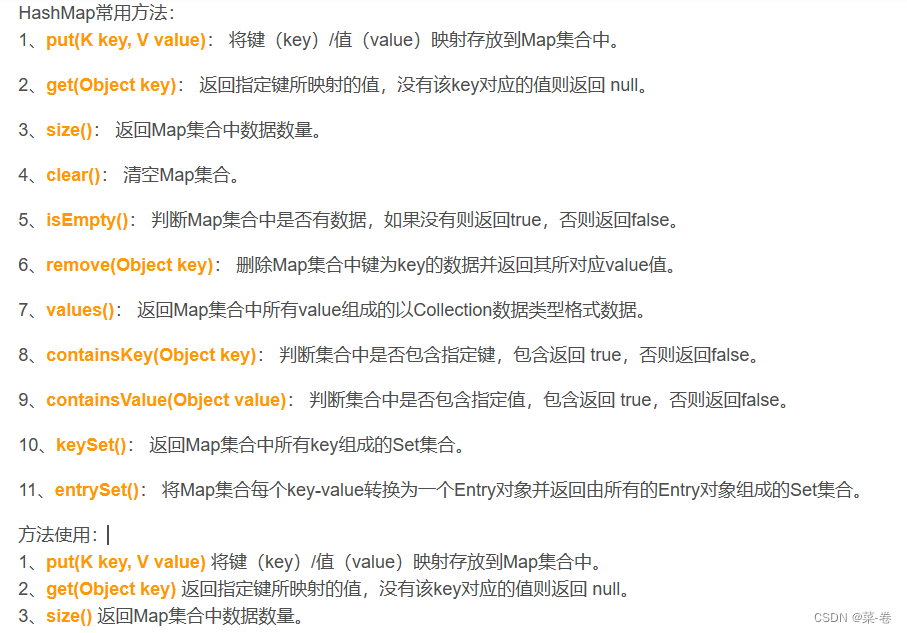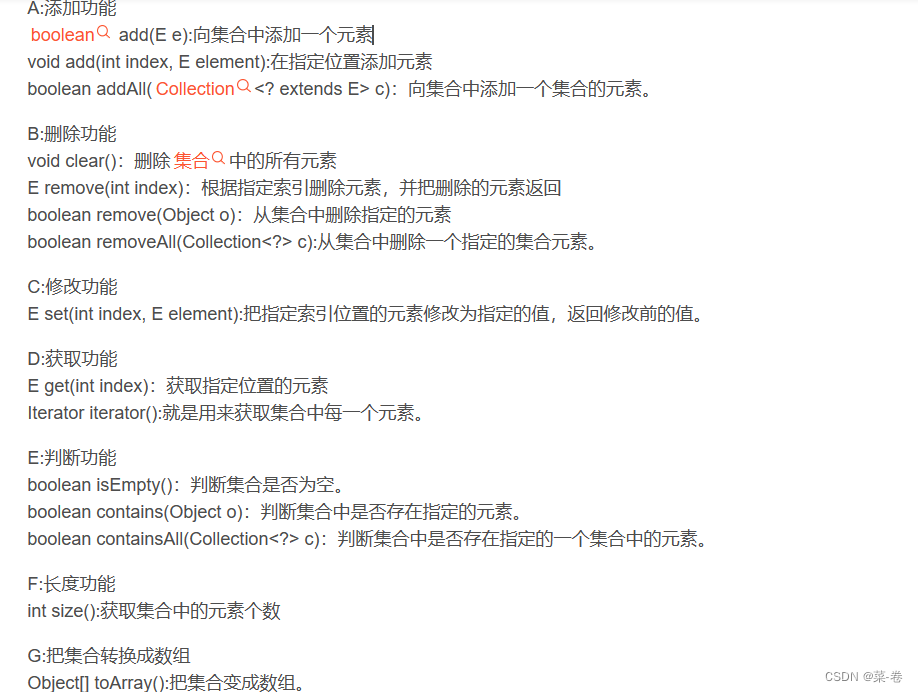HashMap(会根据key值自动排序)

HashMap<String, Integer> hash = new HashMap<>() hash.put(15,18)
hash.getOrDefault(ts, -1) //如果ts(key)存在,返回对应的value 否则返回-1
hashMap1.get(words1[i])==1会报错,因为可能返回null 所以可以使用hashMap1.getOrDefault(words1[i],-1)==1
Set(不允许重复元素)
Set dictionarySet = new HashSet<>() dictionarySet.add(word)
dictionarySet.contains(s.substring(j, i + 1)) set中是否有字符串 s[j]–s[i]
List

remove()后,所有i会立即重新排序
String
substring(int beginIndex):从指定索引位置 beginIndex(包括)开始截取字符串的剩余部分。
substring(int beginIndex, int endIndex):从指定索引位置 beginIndex(包括)开始截取字符串,直到索引位置 endIndex(不包括)为止。
String str = “Hello World”;
char ch = str.charAt(4); // 获取第5个位置上的字符(从0开始计算)
char[] charArray = s.toCharArray(); //字符串转char数组
String ss = “,aa,bb,cc,dd,”;
String[] array = ss.split(“,”); //只去掉一个,
String arr[]=s.split(“[\s]+”); //去掉所有连续任意多个空格(不包括开头、结尾)
string .trim() s.trim()是去掉首尾空格
str.replace(" “,”"); 去掉所有空格,包括首尾、中间
使用 reverse 将字符串数组进行反转 Collections.reverse(wordList); 需要list
使用 join 方法将字符串数组拼成一个字符串 String.join(" ", wordList);
数组
Arrays.sort(beans)















)



